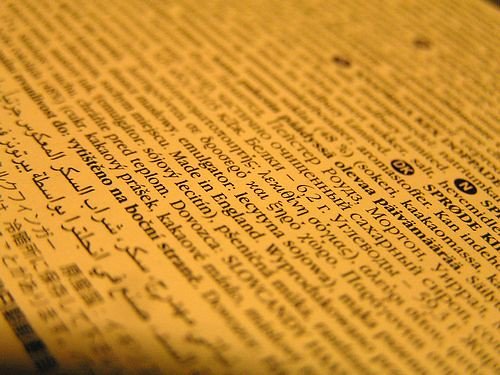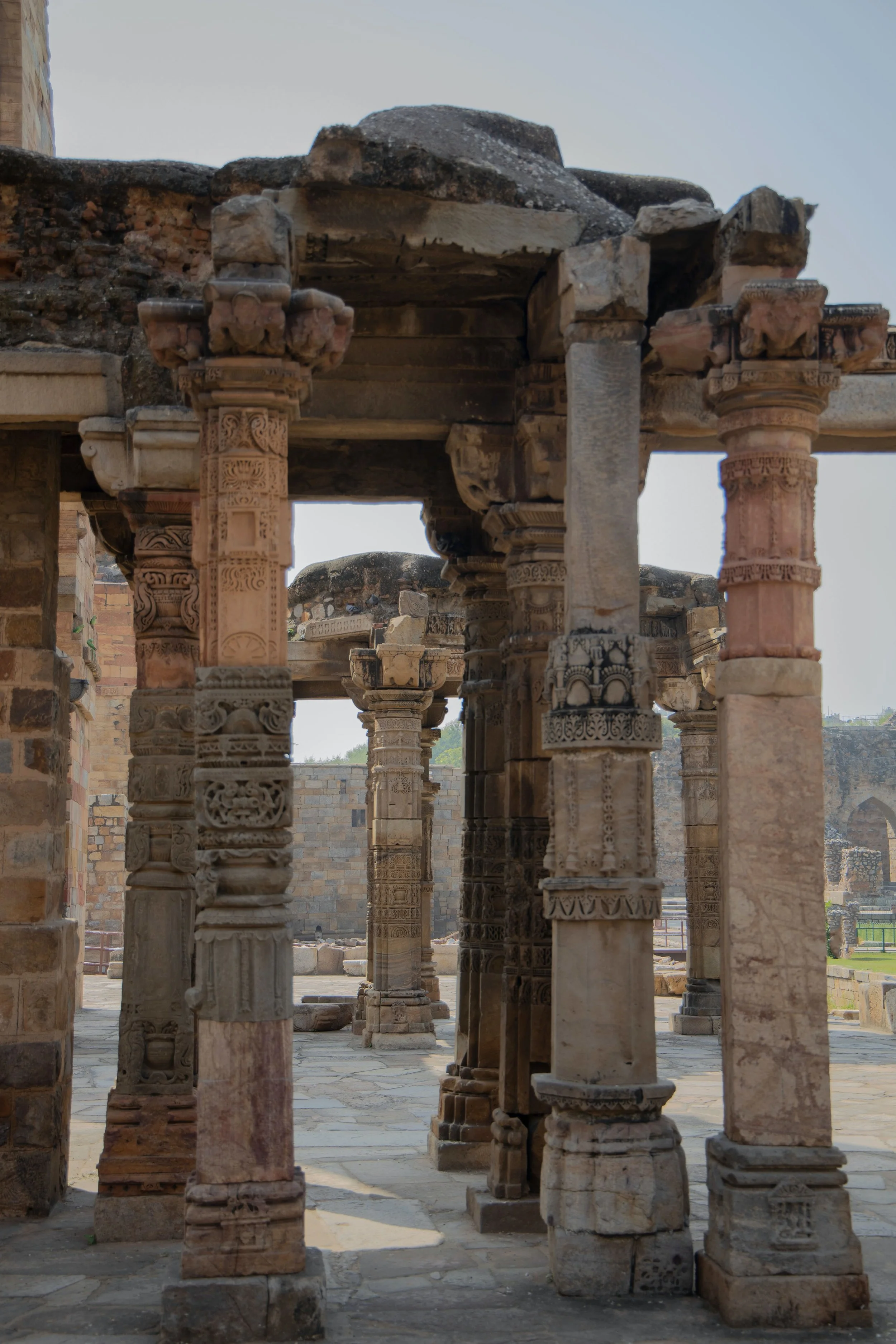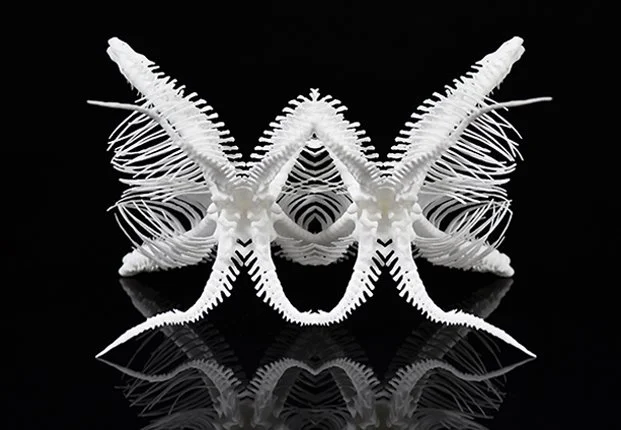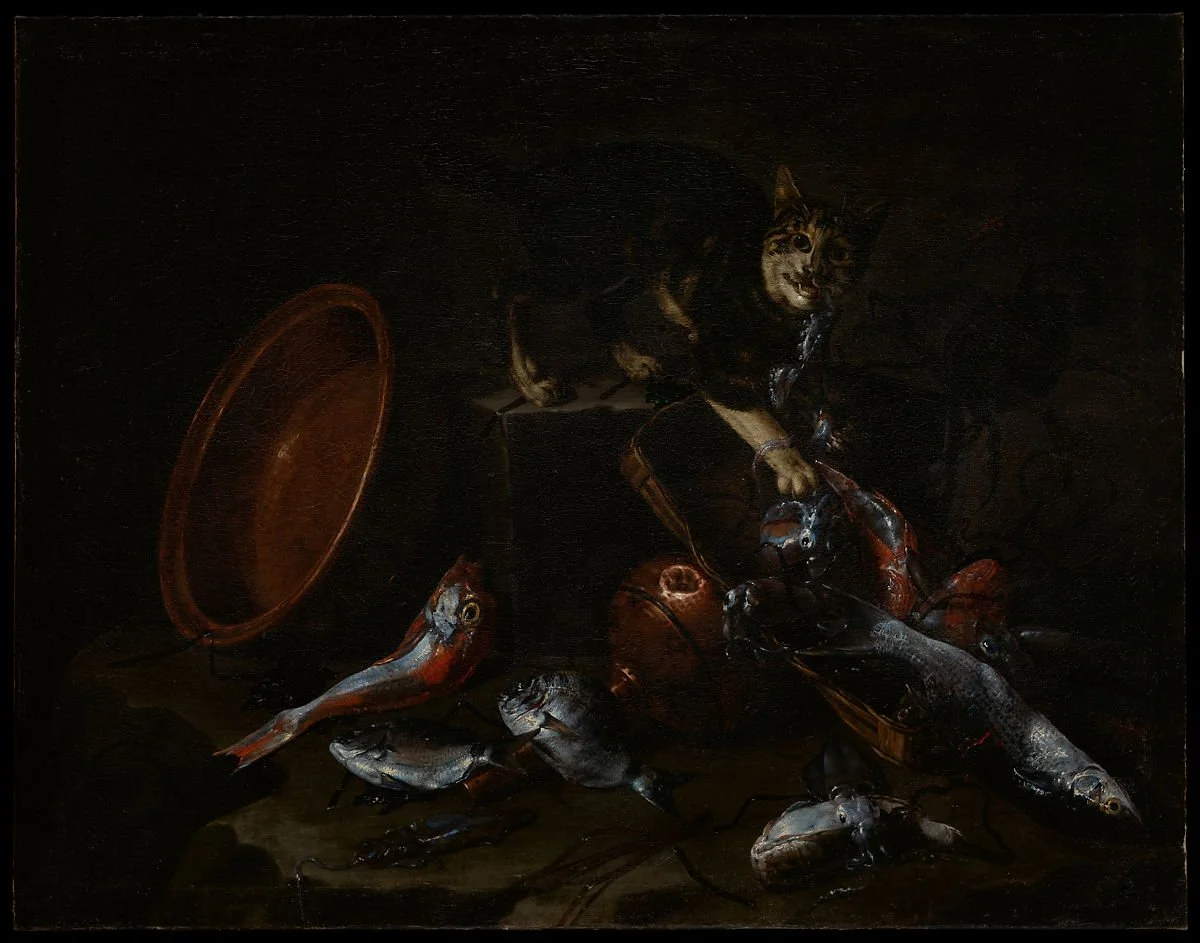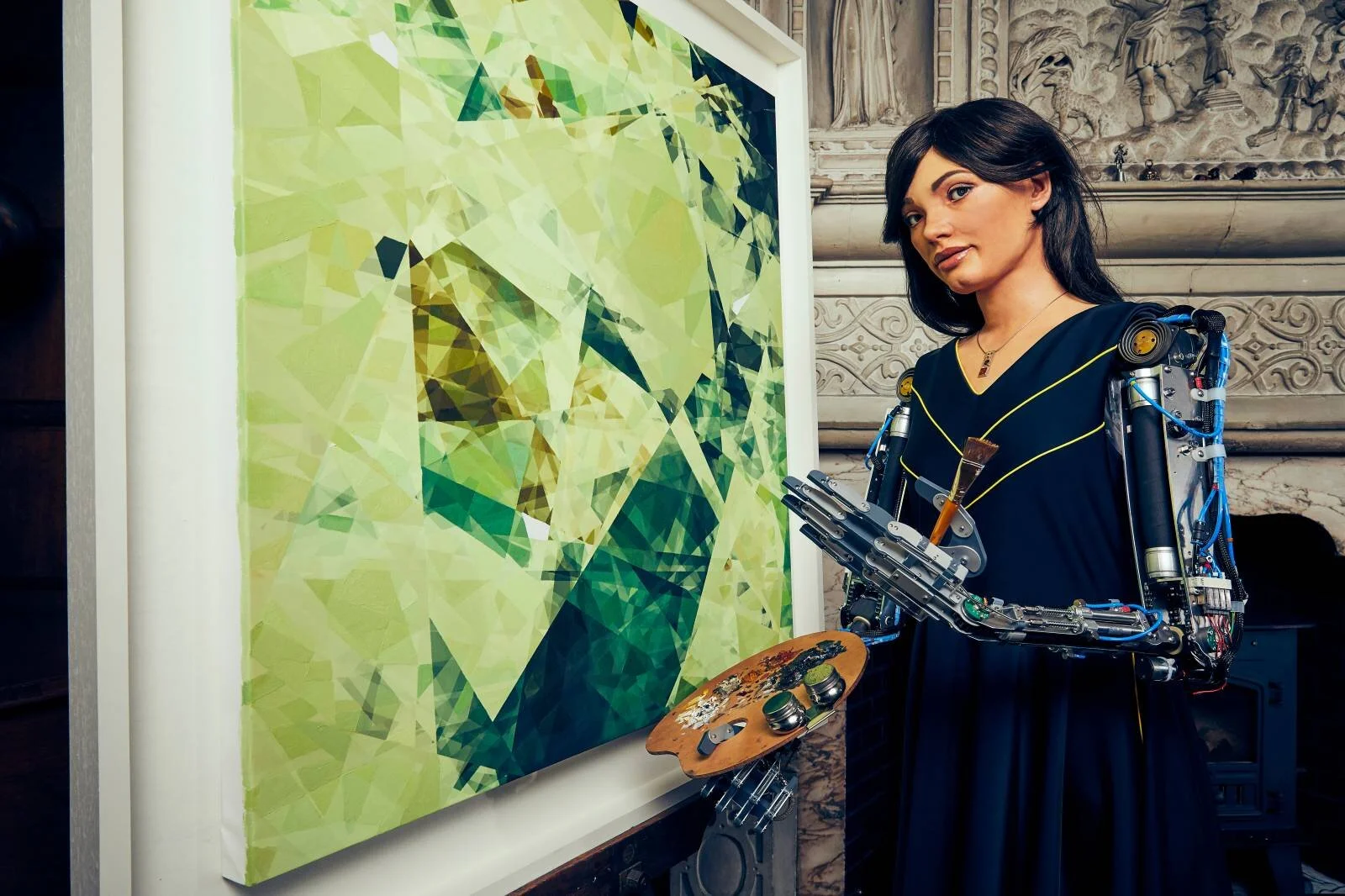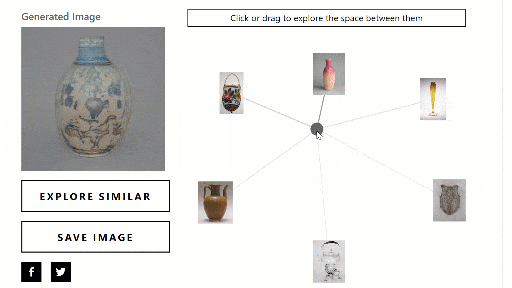In the visual arts, there is no guarantee that work will be preserved for any time after it has been created. While physical pieces are certainly more permanent that performances, all works are subject to deterioration and destruction. Some pieces are more susceptible, such as work made of fragile material or located in an unstable environment, but all pieces will eventually face wear and damage. Restoration is thus required in order to renew pieces to their original and/or best form. Ultimately, the goal of restoration is to safely and accurately bring pieces to their best form for study and public enjoyment. Through technology, this goal can be accomplished.
Museums' Use of Natural Language Processing
Natural Language Processing is used by a variety of institutions, including the fine arts. For a review on its origins and use, read this article. Many museums are employing professional translation services. For instance, the Field Museum in Chicago uses a company called Multilingual Connections, and the Denver Botanical Gardens, South Florida Science Center, and the Metropolitan Museum of Art use a company called Eriksen Translation. That is, museums must pay for professional human translators in order to offer material in multiple languages. Besides machine translation’s promise of museums’ ability to better serve communities in America, the international museum industry also thrives off the ability to offer people a window into culture and identity that isn’t possible without accurate translations. The significant reduction of costs that would occur if machine translation improved would offer museums the ability to broaden their offerings and expand their visitor experience beyond their current capabilities.
Understanding Natural Language Processing
In a world where Siri can set alarms, give us directions, and look things up, shouldn’t machine translation be better by now? How does machine translation work? Why are museums still using human translation? And most importantly, what happens when machine translation is good enough that museums and other arts enterprises can use it without human oversight? Regardless of its shortcomings, Natural Language Processing has made profound developments within the past 5 or 6 years. While there is still much to be improved on, its integration into everyday life personally and professionally shows that this technology will only experience improvement in the future.
NFTs: Digital Renaissance or Death Knell of Traditional Art?
The hype around non-fungible tokens (NFTs) seems to be reaching a fever pitch. With news of certain digital art pieces selling for tens of millions of dollars and conjecture about what utility these tokens may have outside of the art world, for better or for worse, Web3 has arrived. These technological developments are not just demonstrating a technological evolution, though. They are also creating massive disruption across the visual art industry. The advent of NFTs is spurring a digital r
The Key Role of VR in Preserving Cultural Heritage
Virtual reality (VR) has quickly become a mainstay for exhibiting arts and cultural organizations. When looking at it as a concept, “VR has the potential to simulate imaginative and existing physical environments along with their processes. The simulations can be tuned to a highest level of multisensorial realism in order to affect users' visual, auditory, tactile, vestibular, and even olfactory and gustatory senses.” But what does it mean to museums and cultural organizations, and how can it help the arts?
Open Access Initiatives & Its Impact on the Art World
According to the Western Museum Association, Open Access refers to efforts made by museums to provide high-resolution downloadable images free of charge to maximize the ability of the user to interact with, share, and reuse the images. In 2018, Douglas McCarthy, Collections Engagement Manager at Europeana, and Dr. Andrea Wallace, Senior Lecturer in Law at the University of Exeter, set out to see how many cultural heritage institutions make their digital collections available for free use, as well as how they do it. The pair created a Google Sheet survey that has listed over 1,200 international institutions, including Galleries, Libraries, Archives, and Museums. Over one-third of these records name specific Museums. While Open Access encompasses numerous industries, this article focuses Open Access technology and usage in the context of Museums and Artists.
Open Access and Why it Matters in the Museum Space
Amidst Covid-19, many museums moved to sharing collections and exhibitions virtually. However, even before Covid, museums began sharing their collections in a virtual, accessible manner with Open Access. It is estimated that nearly 1,000 cultural heritage institutions world-wide have published some or all of their collections with Open Access usage. While Open Access exists in other industries, such as in libraries, this article focuses on the context of Open Access in the museum space.
Could It Be Sentience or Just Expert Coding? The Emerging Role of Robots in the Arts
Few innovations represent the intersection of humanity and technology more famously than that of the robot. Like art, robots are the result of humanity’s urge to create something new in its own image – and, also like art, they have become an inescapable part of our world. In a post-pandemic world whose inhabitants have become accustomed to virtual experiences, these robotic arts roles, including facilitating virtual museum visits, performing through a computer program rather than a script, and creating what maybe approaching original and creative art, are probably here to stay.
Social Distancing Strategies in the Arts: Museums, Part 1 of 3
With most major countries outside of the United States going through reopening procedures, social distancing strategies are being implemented to help stagnate or reduce the number of COVID infections. This 3 part series will highlight case studies for the Fine Arts, Theatre, Orchestra, Dance, and Movie Industries, showing measures that have been implemented or recommendations in place for each. Part 1 will focus on the museum space.
A general look on Artificial Intelligence used in Museum Audience Engagement
Recently, museums are utilizing Artificial Intelligence Technology to engage audiences and personalize visitor experiences. Before doing any further research, it is important to understand what the AI technologies are that are used for audience engagement. How are they implemented into museums? And are there any challenges or problems?
What Makes Facial Recognition Controversial?
Facial recognition technology is in a predicament, and has actually been there for quite a while. What did it experience to become the center of the controversy and how does such controversy influence the art industry? Controversial discussion never stops a new technology, and instead, it creates a buffer to help the aggressive technology to slow a bit. With this opportunity, arts managers and other stakeholders may be able to check if they are on the right track dealing with the technology and consider whether they need to reshape it to meet future challenges.
How The Arts Are Harnessing the Power of Artificial Intelligence
Artificial intelligence continues to make its way into the main stream and into multiple industry sectors. The arts are no exception. Over the past few years we have begun to see a wave of organizations use artificial intelligence as a method to both enhance the audience experience and generate new creative expression.
AMT Lab News Roundup: August
August tends to be summer's warmest month, and the news in the arts management and technology sector was just as hot. Cuseum released a report on AR’s visitor impact, early blockchain prototypes were found in the New York Times, and the Broad Museum shared details on their upcoming smart gallery labels. Plus, if your organization hasn’t thought about Pinterest in a while, you may want to. Read on to find out more!
Uninterrupted Research: Advancing the Digitization of Archives
Museum Data and What To Do With It – Children’s Museum of Pittsburgh Part Two
As a part of the “Museum Data and What to Do with It” series, AMT Lab contributor Kate Lin takes a look at the Children’s Museum of Pittsburgh’s journey of adapting to technology trends, and how Big Data is changing the museum’s operations. This post focuses on the visitor experience and development at the Children’s Museum of Pittsburgh. More on how data influences the Museum's marketing efforts can be found here.
Unique Audience Structure and Visitor Experience For Children’s Museums
George Brzezinski, the Director of Visitor Services at the Children’s Museum of Pittsburgh, oversees all aspects of visitor services at the museum from admission, cafes, to rental events. Brzezinski brought his previous experience in the sports management field into the non-profit world 12 years ago. When asked about the most significant difference is in terms of visitor service at the Children’s Museum compared to other organizations, Brzezinski said, “the age of our visitors, obviously.”
Many visitors at the Children’s Museum of Pittsburgh are below the age of ten, which makes customer service especially important. To serve its audience’s needs, the museum is constantly working on enhancing visitor experience by finding ways to speed up the admission process. “When the most common visitors are young parents with small children, there’s not much room for patience at the admission desk. Data and technology changed every part of our operations, especially in terms of admissions and membership,” said Brzezinski.
Qualitative data collected through surveys and social media channels is informative in providing the museum with customer feedback. Parking fee collection is one great example of how the museum responded to customer feedback using technology. Instead of having people pay the parking fees at the admissions desk, visitors can now pay at the machines in the parking lot. This seemingly modest change has made the admissions process much quicker and more convenient for the museum members. Now members can pass through the desk quickly and start enjoying the museum without taking out their wallet and waiting for the payment to be processed. There’s also an app for people to download that remembers their car’s license plate number and credit card information, making the payment process as simple as hitting a button on their device on each visit.
Efforts and Challenges in Data Collection at the Children’s Museum of Pittsburgh
The unique composition of its audience also makes collecting data at the admissions desk a difficult task. As of now, the museum only collects zip codes from their patrons, unless they make a purchase at the museum. The target audience of the children’s museum are families with children. This audience group values efficiency and convenience more than others. If patrons purchase a membership, other data such as name, age, address and phone number can be collected. For regular visitors or non-members, it is almost impossible for the children’s museum to collect more data without sacrificing the quality of visitor experience.
However, the Children’s Museum of Pittsburgh has a department of learning and research that conducts audience surveys separately from the admissions process, attempting to make up for the information that is hard to collect at the front desk. The department utilizes special events such as birthday parties, reunions, and field trips, to gather feedback and shape profiles for different audience segments based on the results.
Data Integration: From Point-of-Sale E-Commerce Data to CRM Database
The implementation of Siriusware, an on-site ticketing and point-of-sale software, has significantly improved the data integration at the Children’s Museum of Pittsburgh. Siriusware delivers essential features required at every point-of-sale from online shopping, e-gift cards to admissions. Prior to Siriusware, the Children’s Museum of Pittsburgh had TicketMaster Vista, which did not automatically integrate e-commerce data with the museum database. Whenever a customer bought a membership online, the museum staff would have to manually enter the data into their database. With Siriusware, all point-of-sale data is integrated in real-time. An additional add-on connects Siriursware to Raisers’ Edge, the primary donor database at Children’s Museum, and allows the membership data to flow into the donor database and vice versa.
However, there are still some limitations of the current system to fit all the needs for Children’s Museum of Pittsburgh. Unlike some museums that outsource their café operations to a third-party provider, the Children’s Museum runs its own café service – the Big Red Room Café. Compared to other software packages that are designed for the food industries, Siriusware currently has limited functionality when it comes to managing food inventory.
Data Provides Insights for Development at Children’s Museum of Pittsburgh
Gina Evans, the Director of Development, oversees the museum’s development efforts to raise two million dollars to support their annual operational budget, plus another one million to support other special projects and campaigns. Evans leads a four-person team, covering areas including corporate giving, individual giving, grant writing and special events.
Donor data is stored in the Raiser’s Edge database. The team tracks and analyzes the data to support the museum’s fundraising efforts. The team pays attention to trends over time, looking at the type of giving and how people give from year to year. Raiser’s Edge helps the development team tremendously for its ability to target each specific donor group differently based on the reports that it generates.
Examining data from Siriusware and MailChimp also provides the museum additional insights to detect potential future donors. It allows the museum to track people who make donations online or at the front desk and members’ activities in the museum. Mailchimp makes it easier to track the changes of the open rates and for the museum to test the effectiveness of different targeting strategies to those potential donors.
Mobile Bidding App Streamlined Fundraising Events
The Children’s Museum of Pittsburgh was one of the first cultural organizations to use GiveSmart, a mobile bidding app for its fundraising events. The app handles the guest registration and helps with the auction and bidding process. The customers can register on site or pre-register online in advance. It is a high functional tool to collect visitor data and streamline the event process by providing real-time data reports such as which items are more attractive to the audience or which ones are neglected. The real-time reports allow the museum to take immediate actions to further promote those neglected items on-site. The data collected by the app also provides the development team with valuable insights into the audience’s preferences and bidding habits when planning for future events.
It took the museum more time to set up the mobile app, it has made it much easier to manage the auction data and financials for the fundraising events. Other Pittsburgh non-profit organizations, such as Society of Contemporary Craft, have just begun to use this app after consulting with the Children’s Museum of Pittsburgh.
Challenges to Utilize Data For Development Efforts At the Children’s Museum
Budget is always a concern in terms of acquiring other technologies or talents in helping the museum to interpret data. Aside from looking into possibilities to purchase more advanced software packages, the staff is continuously looking into maximizing the functionalities of their current resources. The development team is also looking to take more advantage of the crystal reports function, a reporting tool within Raiser’s Edge database that takes the reporting to a much more detailed level.
According to Evans, the average members of the Children’s Museum remain for about four years and leave when their children are about eight years old, moving on to other organizations such as the Science Centers or the zoo. Those members might return to the museum when they have new children or even grandchildren. One of the things that the museum is trying to achieve is to establish the donor profile over his or her life time to establish patterns of behaviors and better understand its donors. “Currently we don’t have those data profile because our museum has only been around for 36 years, which is only a generation long,” said Evans.
Like many other non-profit organizations, the Children’s Museum of Pittsburgh is challenged by not always having the ability to collect the data it needs or the capacity to digest and analyze the data it has. However, the museum has continued to demonstrate growth and a strong dedication to providing high quality content and service for its visitors. With standardizing data analysis being one focus for the upcoming 3-year strategic plan process, we will certainly look forward to the progress that the museum can achieve.
Banner Image "Lion Dance by Josh Gates" provided by Children's Museum of Pittsburgh
Museum Data and What To Do With It – Children’s Museum of Pittsburgh Part One
What do you think about your ticketing software?
We are conducting the 3rd National Ticketing Software Survey during the month of February. If you are interested in sharing your experience and your opinions about your software, please let us know. All those participating in the survey will receive a full copy of the report which will provide a national view as well as cluster analyses by discipline, budget size, and geographic region. The data will be useful for both organizations and vendors. Organizations will gain a better understanding of their own practices as compared to their peers and, more importantly, be able to use the findings as evidence for future technology funding campaigns. Vendors will have explicit evidence as to the needs and wants for future software design.
How Museums Are Dealing With New Media Art: Part 2
In 2000 the Washington DC based Smithsonian American Museum of Art announced the creation of the New Media/New Century Award. The New Media/New Century Award became one of first projects to support new art created for the Web. The museum accepted proposals for original Web-based projects that explored the subject of American landscape, and how the new medium of Web art affected the American landscape as a subject.
Though the project is over 10 years old, it demonstrates the early and exceptional sensibility of the Smithsonian’s curators. They understood the growing relevance new media art and especially Web-art, and its impact not only on people’s everyday perceptions, but also on the art scene as a whole.
How Museums Are Dealing With New Media Art: Part 1
When talking about new media art, there is no single definition. According to a 2001 research study by the Rockefeller Foundation, media artworks can be defined according to nine common elements: fluidity, intangibility, liveness, variability, replicability, connectivity, interactivity, computability, and chance. New media art is a very general and broad category and includes many subcategories. Among these, net art, digital art and plurimedia art are the most common within the visual art field. Nevertheless, the meaning of new media is constantly evolving.








